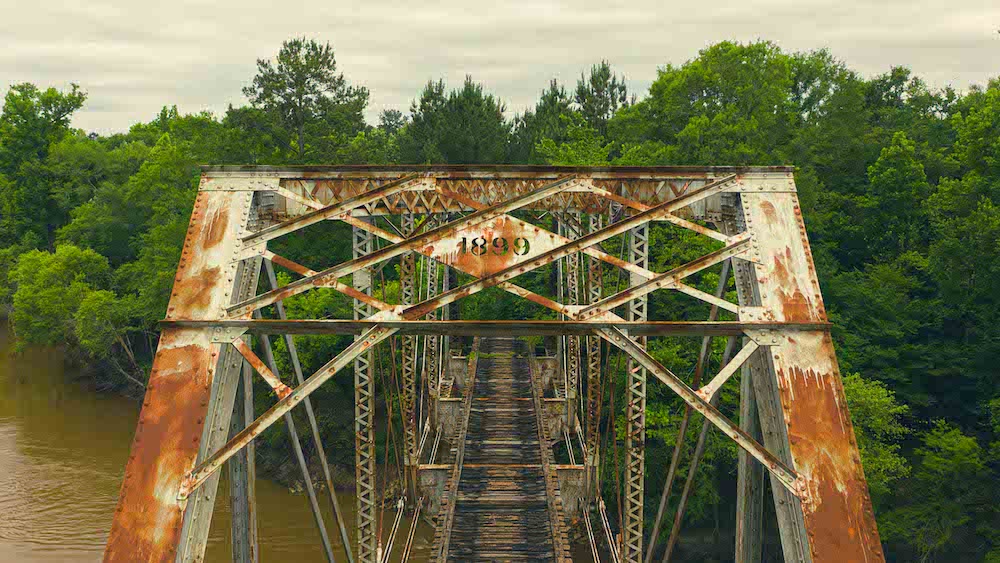 CALEB FORTENBERRY | TCB Rockland, Texas Abandoned Railroad Trestle, completed in 1899.
CALEB FORTENBERRY | TCB Rockland, Texas Abandoned Railroad Trestle, completed in 1899.
By Caleb Fortenberry
Sawmill towns drove the economy of Southeast Texas in the 1800s. From topographical to abstracts, many of these forgotten towns can be referenced in early 20th century maps. One of the most notable towns that was forgotten and left to fall into ruin was the Aldridge Mill in Jasper County, just north of the Neches River and East of Zavalla. This is one of the only mill structures left standing in the area and for an unusual reason. Owner of Aldridge Mill, Hal Aldridge, had a fire occur on his mill in 1911 when it was fashioned out of wood. To avoid insurance rates increasing, he made the structures more fire retardant. He constructed the buildings out of concrete in 1912. With the buildings being made in this fashion, the structures are still standing to this day, and is a spectacular sight to see in the Angelina National Forest. Aldridge did not only operate just this larger mill. He actually started on a smaller scale in Rockland on the south side of the Neches nestled at the northern end of Tyler County.
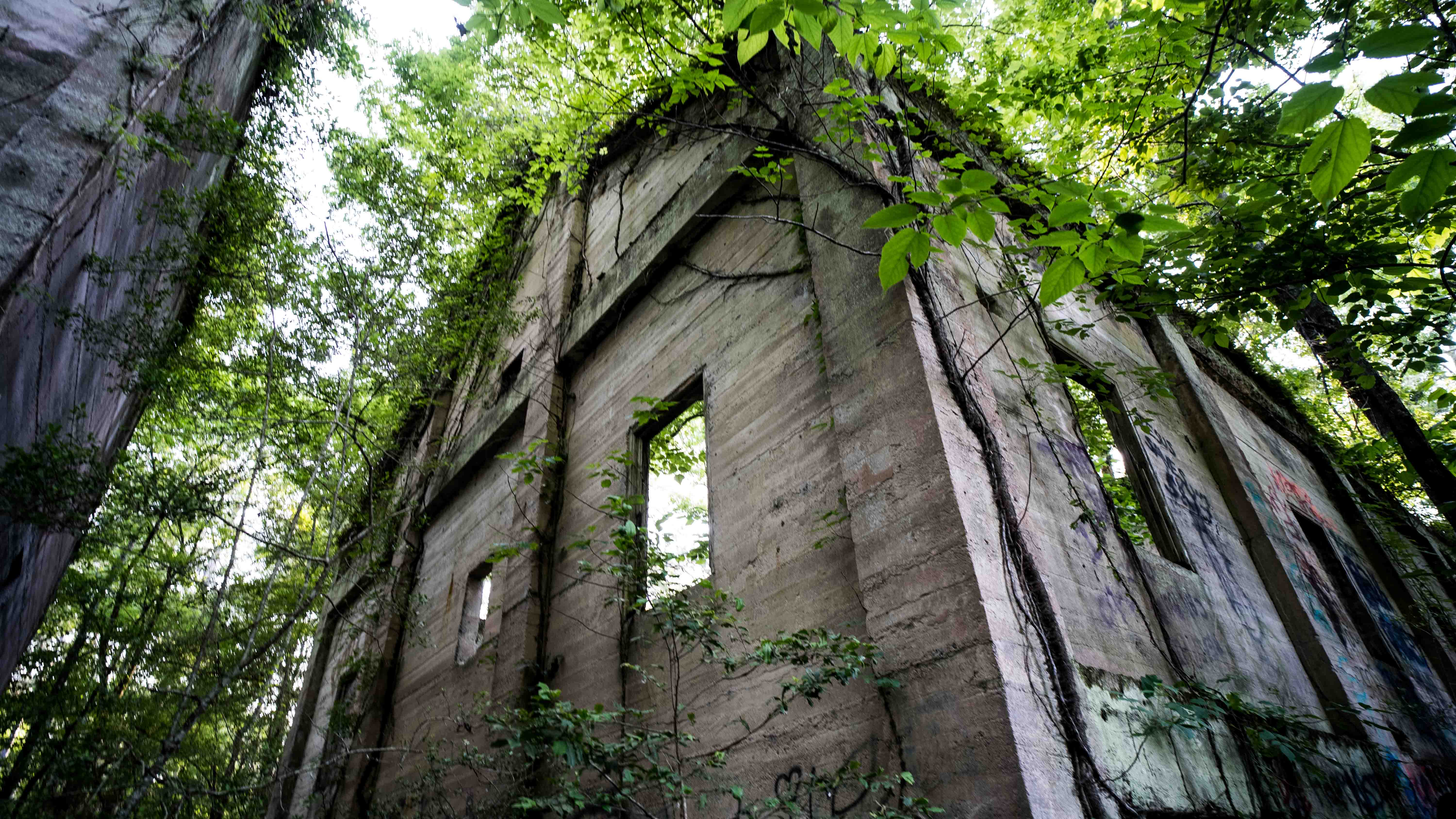 CALEB FORTENBERRY | TCB Aldridge Saw Mill in Jasper County, Texas.
CALEB FORTENBERRY | TCB Aldridge Saw Mill in Jasper County, Texas.
Rockland is known for its stone, and various quarries that helped make the Galveston Sea Wall. Unknown to many, it also was full of longleaf yellow pines at one point and a mill was situated West, right next to the Texas and New Orleans Railroad. Many mills, such as the Rockland Mill, were placed near railroads for quick transportation to other towns, rather than letting the logs float down a river, which was not only time consuming, but problematic. Trams were built to bring logs back to mill ponds, which preserved them while they awaited to be sawn.
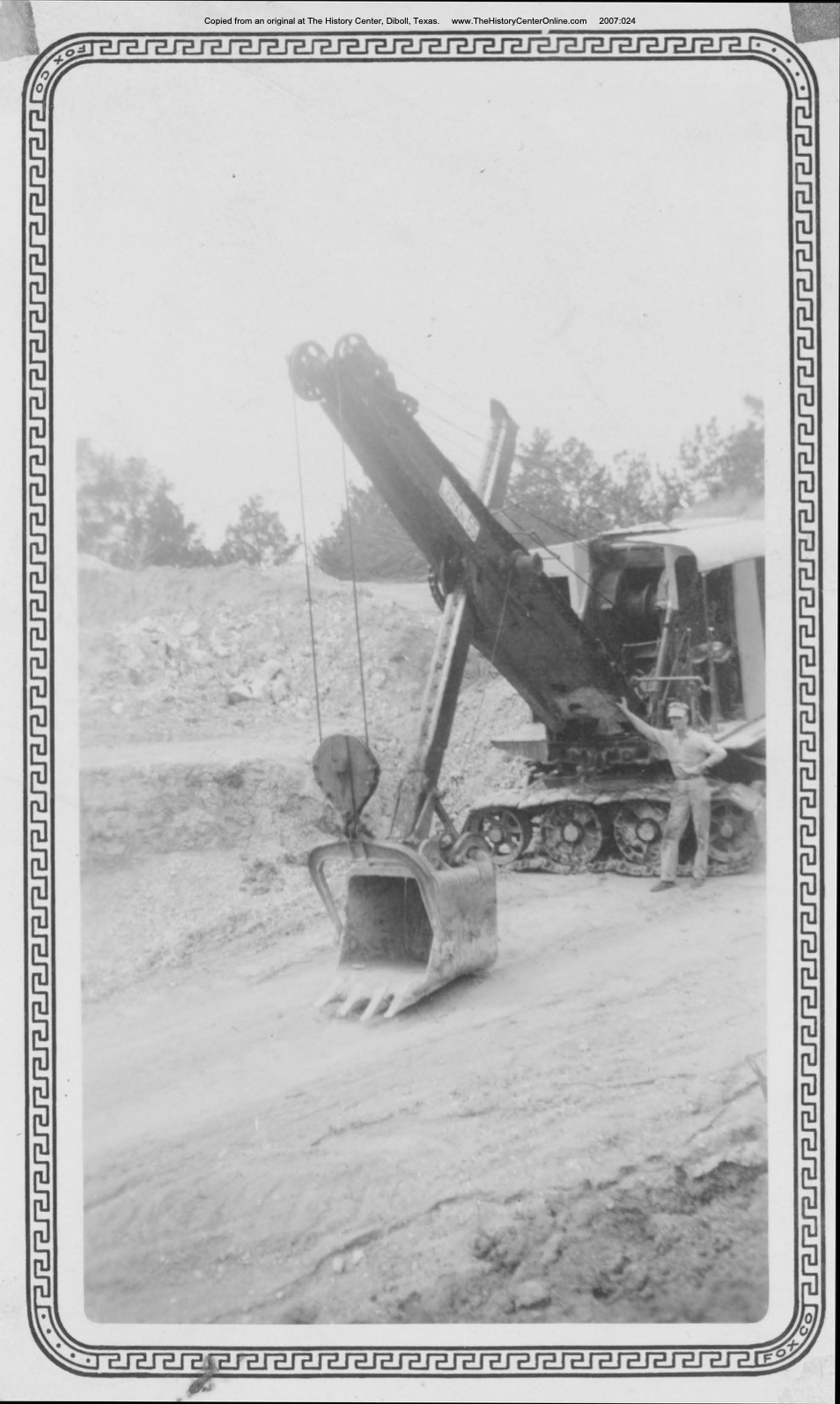 COURTESY THE HISTORY CENTER, DIBOLL, TEXAS Cary Ard and his shovel in the rock pits near Rockland.
COURTESY THE HISTORY CENTER, DIBOLL, TEXAS Cary Ard and his shovel in the rock pits near Rockland.
Education coordinator for the Texas Forestry Museum, Kaitlin Wieseman clarifies, “they would build little short lines out into the forest so then they could cut the trees and have the train bring them back to their sawmill. So, basing their sawmill next to actual prominent rail lines that were main lines, like the Houston East and West, was probably a better idea to do than building out in the forest, in the middle of nowhere. They did have capabilities to build a line but usually they would have teams of men that would build that short line out just into the forest, not necessarily out to their own sawmill, but they could have if they needed to.”
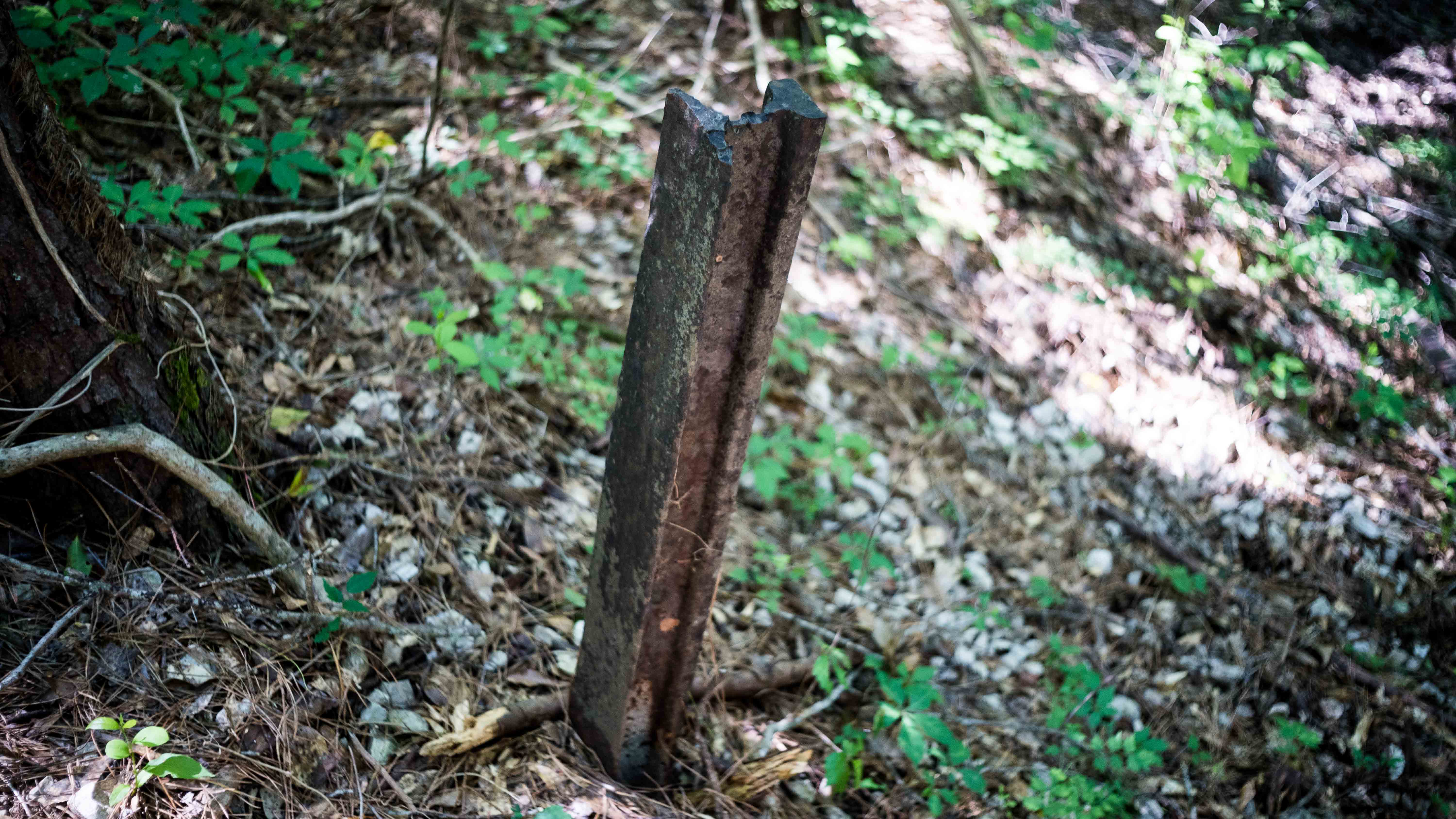 CALEB FORTENBERRY | TCB One of the only remaining track railings along the track bed.
CALEB FORTENBERRY | TCB One of the only remaining track railings along the track bed.
The Rockland Mill, also known as the Rockland Plant, was first owned by one of Rockland’s postmasters, John Delaney and others. Delaney, interestingly enough, worked with Aldridge at the post office. In 1890, Aldridge bought the mill and vast amounts of land tracts in the area. He operated the mill until 1898, when he sold the business to William Cameron & Co., one of the first forestry millionaires. It was burned down November 4, 1898, only a few short months after Cameron bought the sawmill.
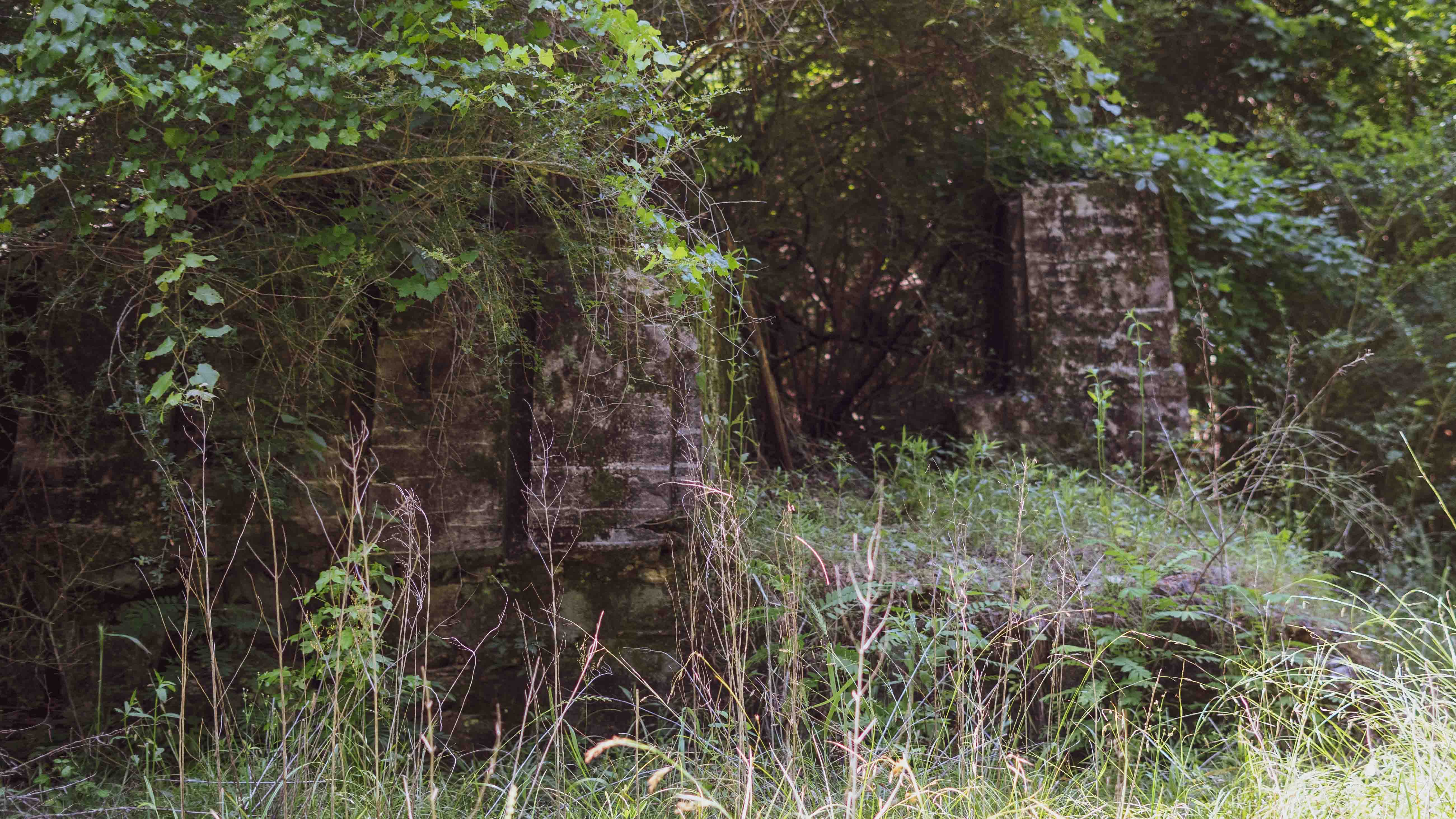 CALEB FORTENBERRY | TCB Remains of the Rockland Sawmill. Steam wheel foundation, located West of most residents in Rockland and East of Highway 69.
CALEB FORTENBERRY | TCB Remains of the Rockland Sawmill. Steam wheel foundation, located West of most residents in Rockland and East of Highway 69.
“If you can just imagine, we’re working with steam, which you have to have fire to be able to produce steam, to heat up the water, but also your working with wood around everywhere. So, some sawmill towns would build their sawmill only of wood. They wouldn’t build them, usually, out of stone just because that costs more,” said Wieseman, “most of the smaller ones, if it burned down, and they didn’t have enough money or area to cut down trees, then rebuilding wasn’t really in their thoughts of doing that because it would cost too much.”
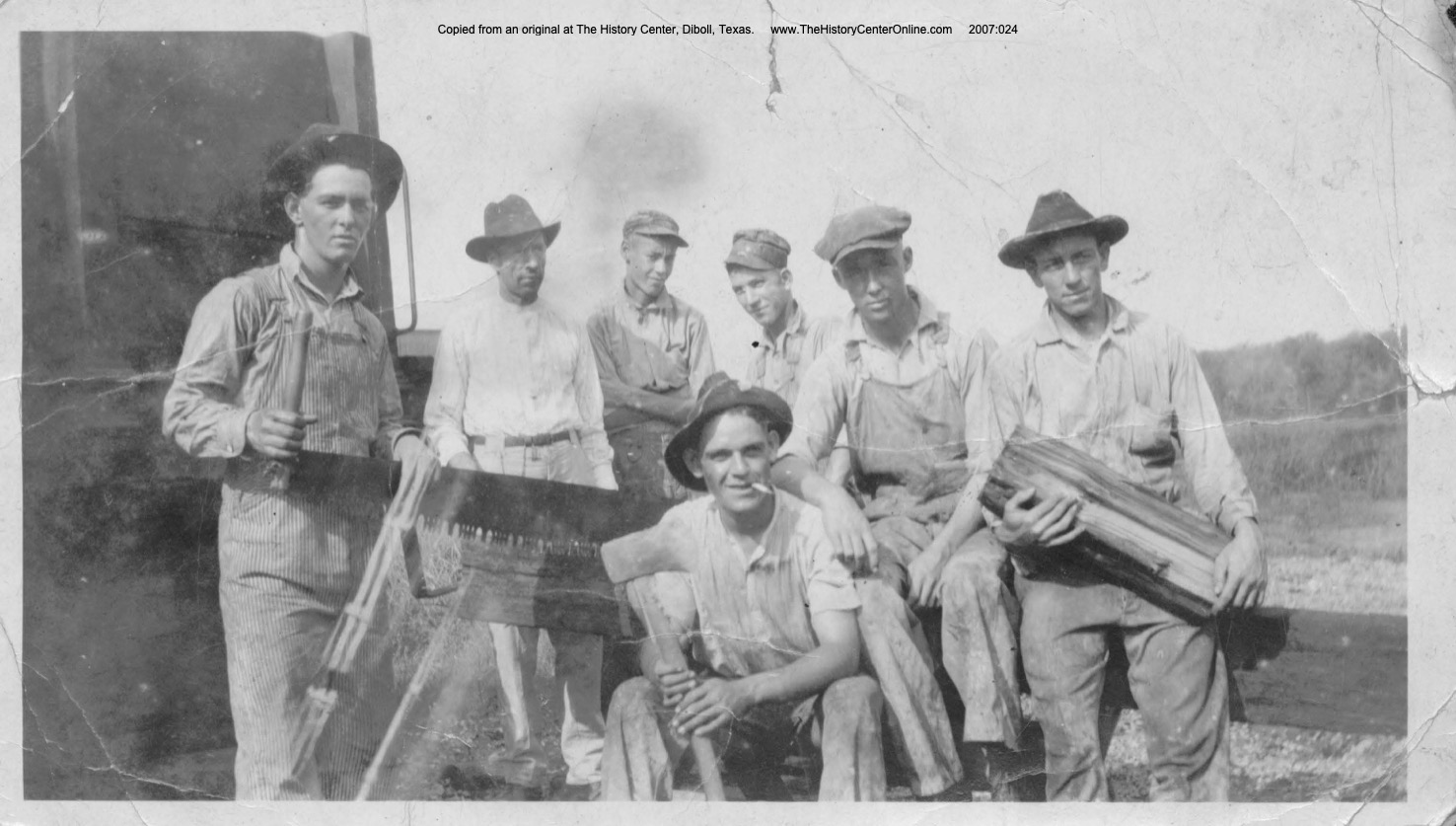 COURTESY THE HISTORY CENTER, DIBOLL, TEXAS A woods crew, possibly connected to the Aldridge Sawmill, stops for a photo.
COURTESY THE HISTORY CENTER, DIBOLL, TEXAS A woods crew, possibly connected to the Aldridge Sawmill, stops for a photo.
The plant was rebuilt with newer equipment and a water tower that measured 125 feet above the ground and able to hold thousands of gallons to transport water throughout the mill. Cameron operated the mill producing roughly 3,000,000 linear feet of lumber per year, until he sold it to John Henry Kirby in 1905.
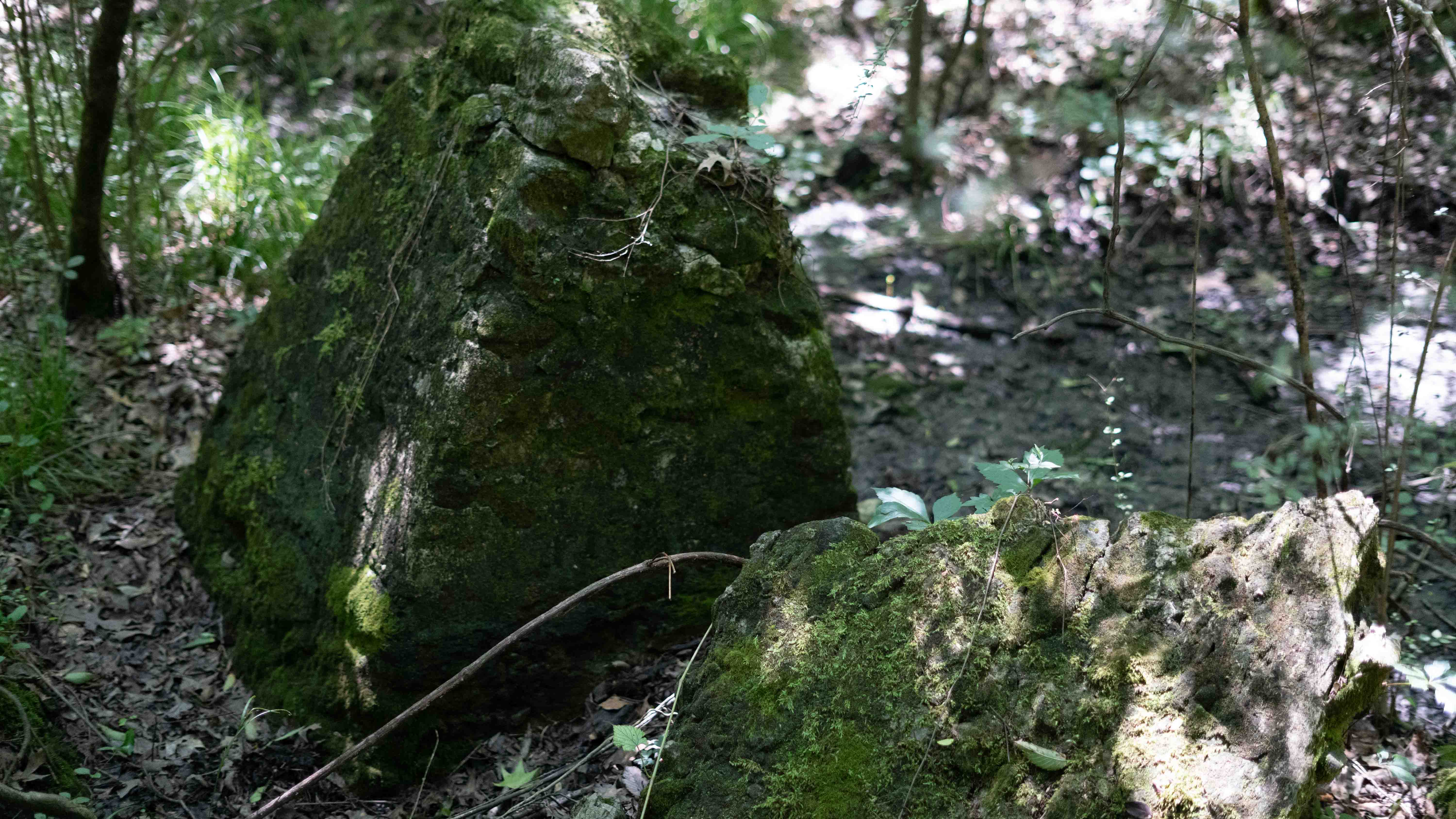 CALEB FORTENBERRY | TCB Foundations at the Rockland Mill.
CALEB FORTENBERRY | TCB Foundations at the Rockland Mill.
One of the interesting details learned about mill towns of that time is that they had a form of currency for each company. In this particular mill, it could have had at least three different forms of coin being used for trade at the company general store and commissary. Aldridge, Cameron, and Kirby used these coins for the workers to make various purchases from the mill’s stores.
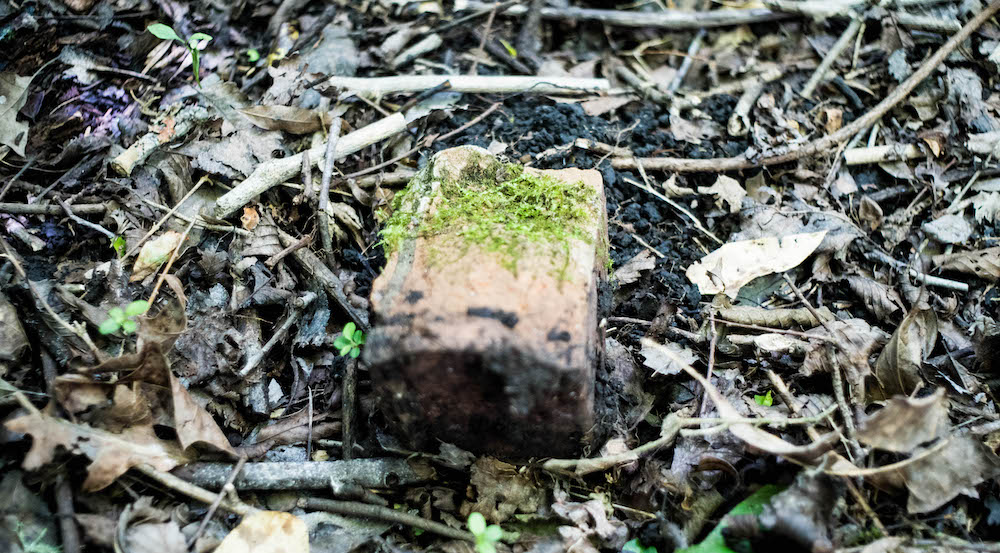 CALEB FORTENBERRY | TCB Bricks found adjacent to the Rockland mill pond and saw mill.
CALEB FORTENBERRY | TCB Bricks found adjacent to the Rockland mill pond and saw mill.
One of the reasons Rockland became so popular, was not just the sawmill, but the fact that the railroad did not cross the Neches. It stopped in Rockland. That is, until 1899 when the rail road trestle was completed. Similar to the remains of the Rockland Plant, the bridge over the Neches still remains intact and unharmed by human vandalism, more than likely due to the inconvenience of getting to it. It is still a spectacular view if you can get to the bank near it. The engineering and man power that went into building it is perplexing.
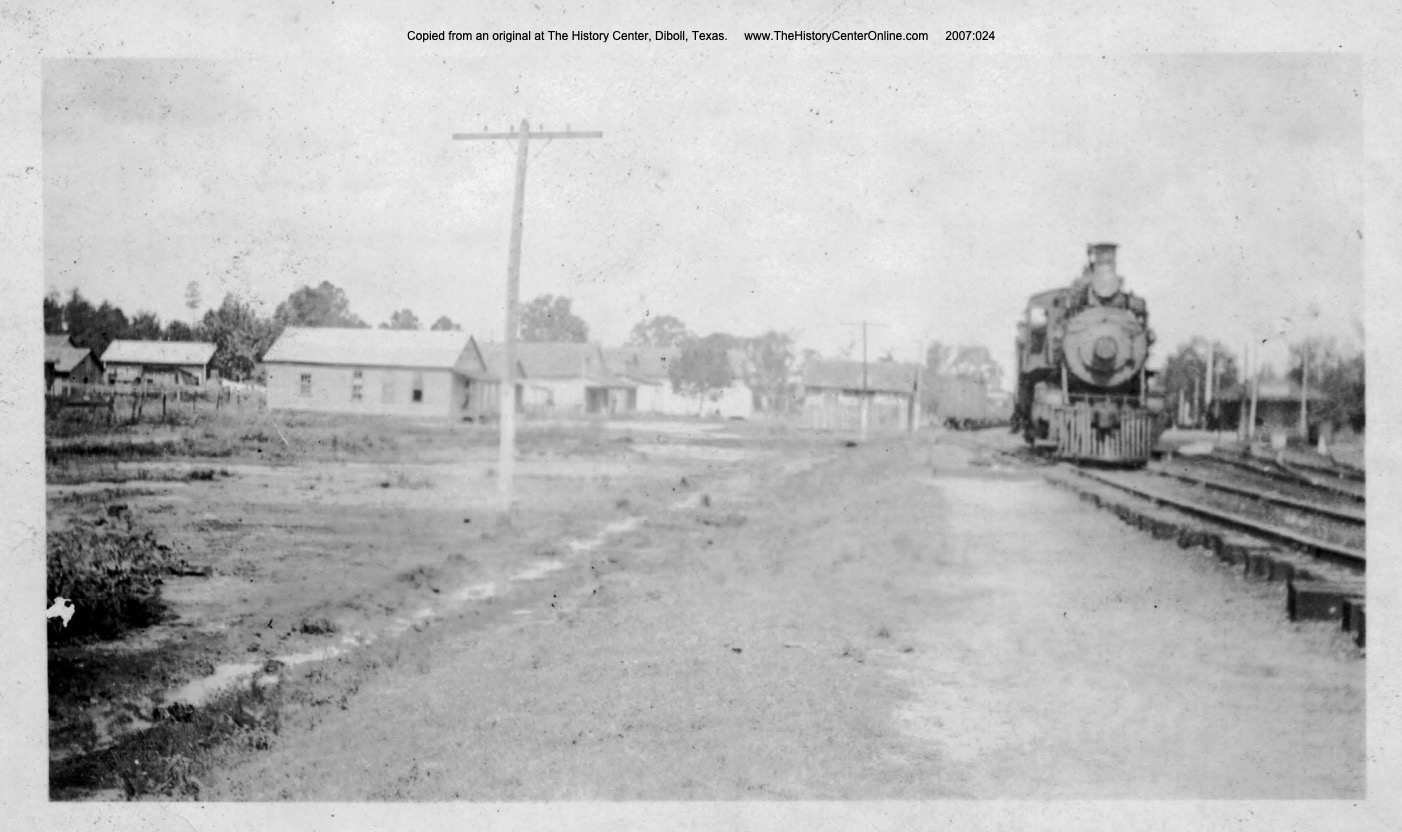 COURTESY THE HISTORY CENTER, DIBOLL, TEXAS A locomotive heads toward Beaumont, passing through the Rockland railyard.
COURTESY THE HISTORY CENTER, DIBOLL, TEXAS A locomotive heads toward Beaumont, passing through the Rockland railyard.
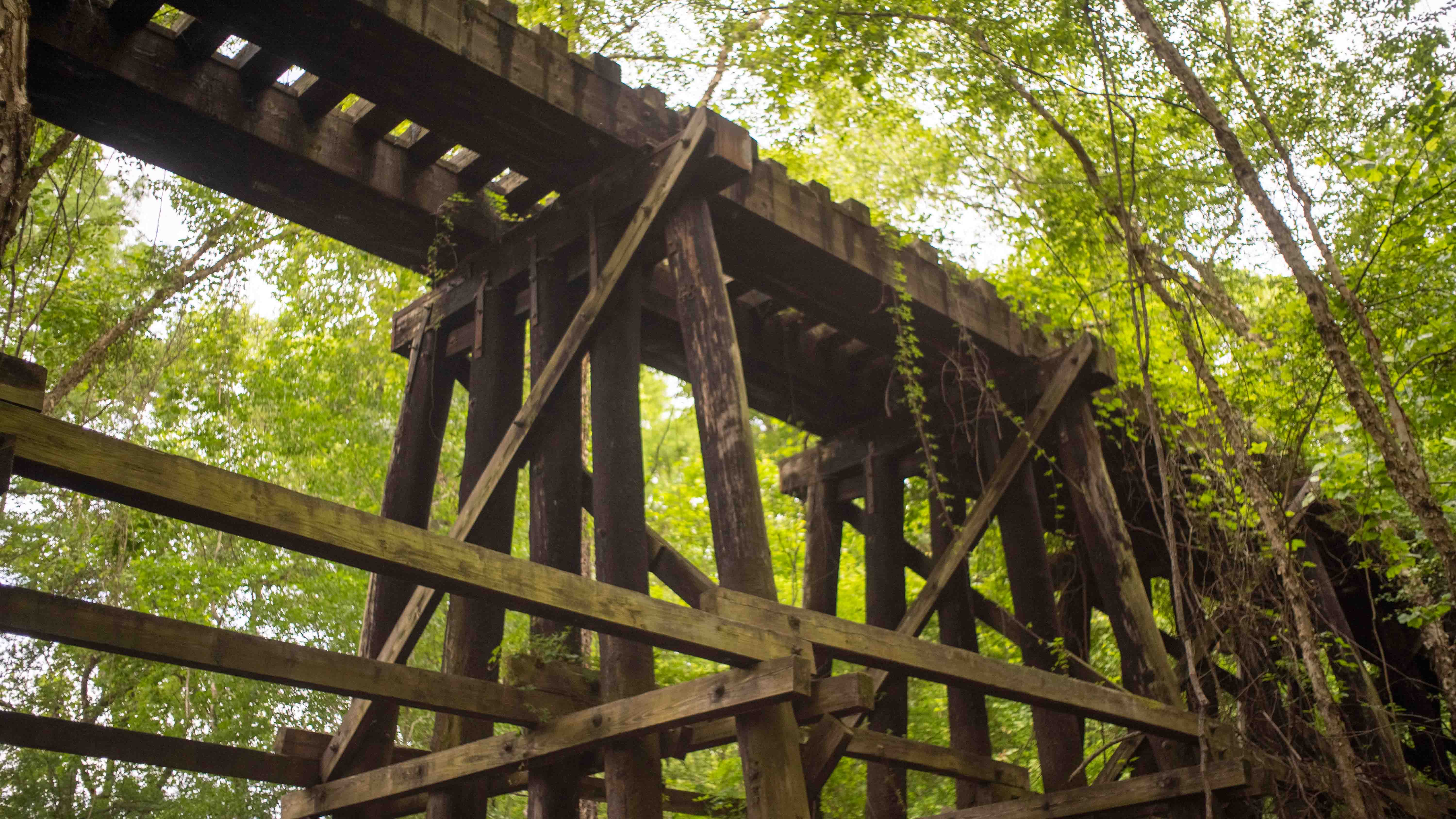 CALEB FORTENBERRY | TCB Rail Road on the Jasper County side of the Neches leading to the Rockland Trestle.
CALEB FORTENBERRY | TCB Rail Road on the Jasper County side of the Neches leading to the Rockland Trestle.
The main way to cross the river without taking the train was Dunkin’s ferry, which has been speculated that country singer, George Jones, once helped operate. Mac Dunkin’s well, barn and chimney are all that remain of the crossing. The old Lufkin – Beaumont Highway led to the ferry situated just Northwest of the mill. It operated until the 1930s when the US Highway 69 bridge joining Jasper and Tyler counties was completed. This left the town of Rockland off to the wayside and the mill eventually shut down. It wasn’t until rock quarries began to produce in higher volumes, that the town was revived for a period.
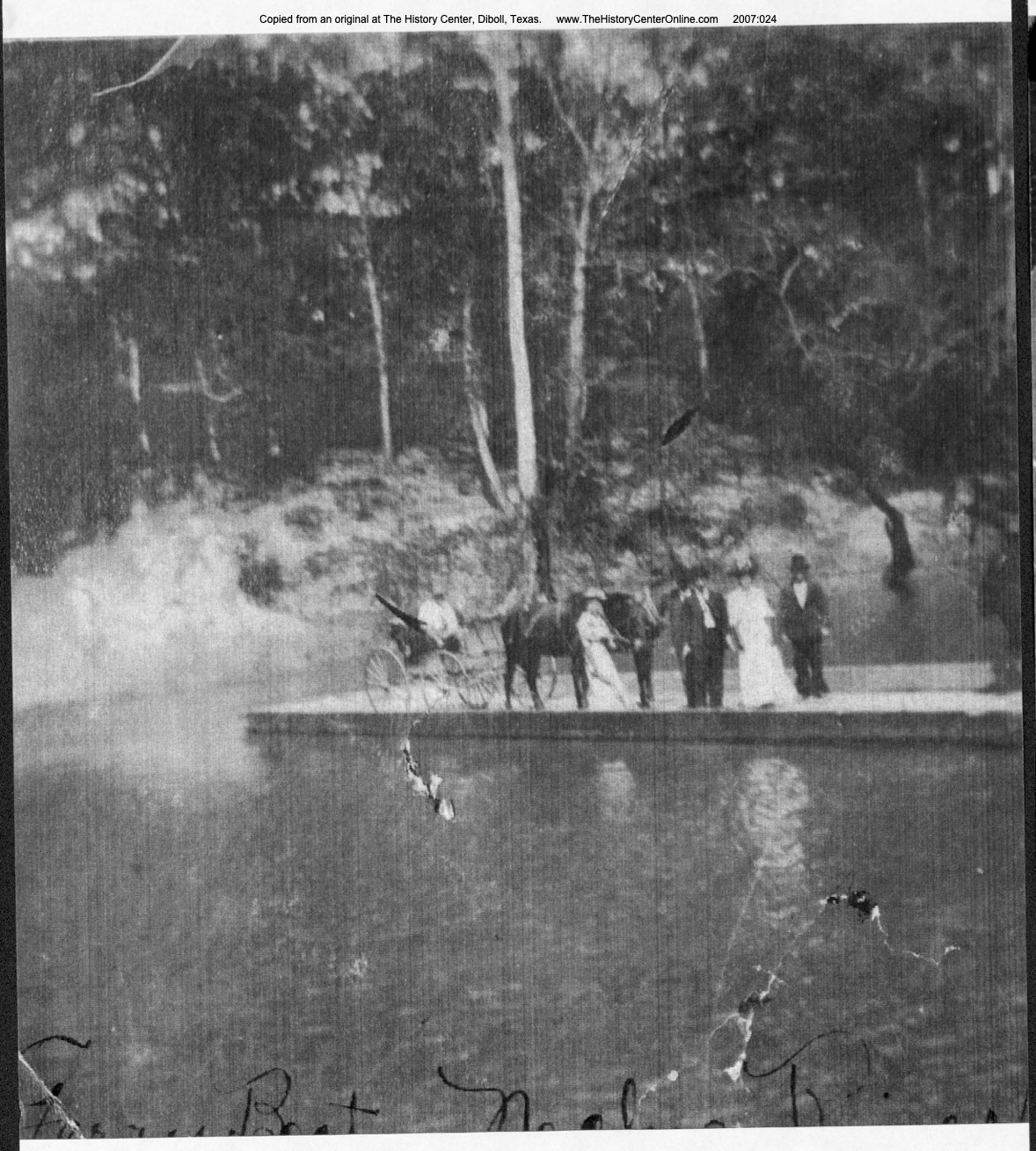 COURTESY THE HISTORY CENTER, DIBOLL, TEXAS A group of well-dressed travelers cross the Neches River using a ferry near Rockland.
COURTESY THE HISTORY CENTER, DIBOLL, TEXAS A group of well-dressed travelers cross the Neches River using a ferry near Rockland.
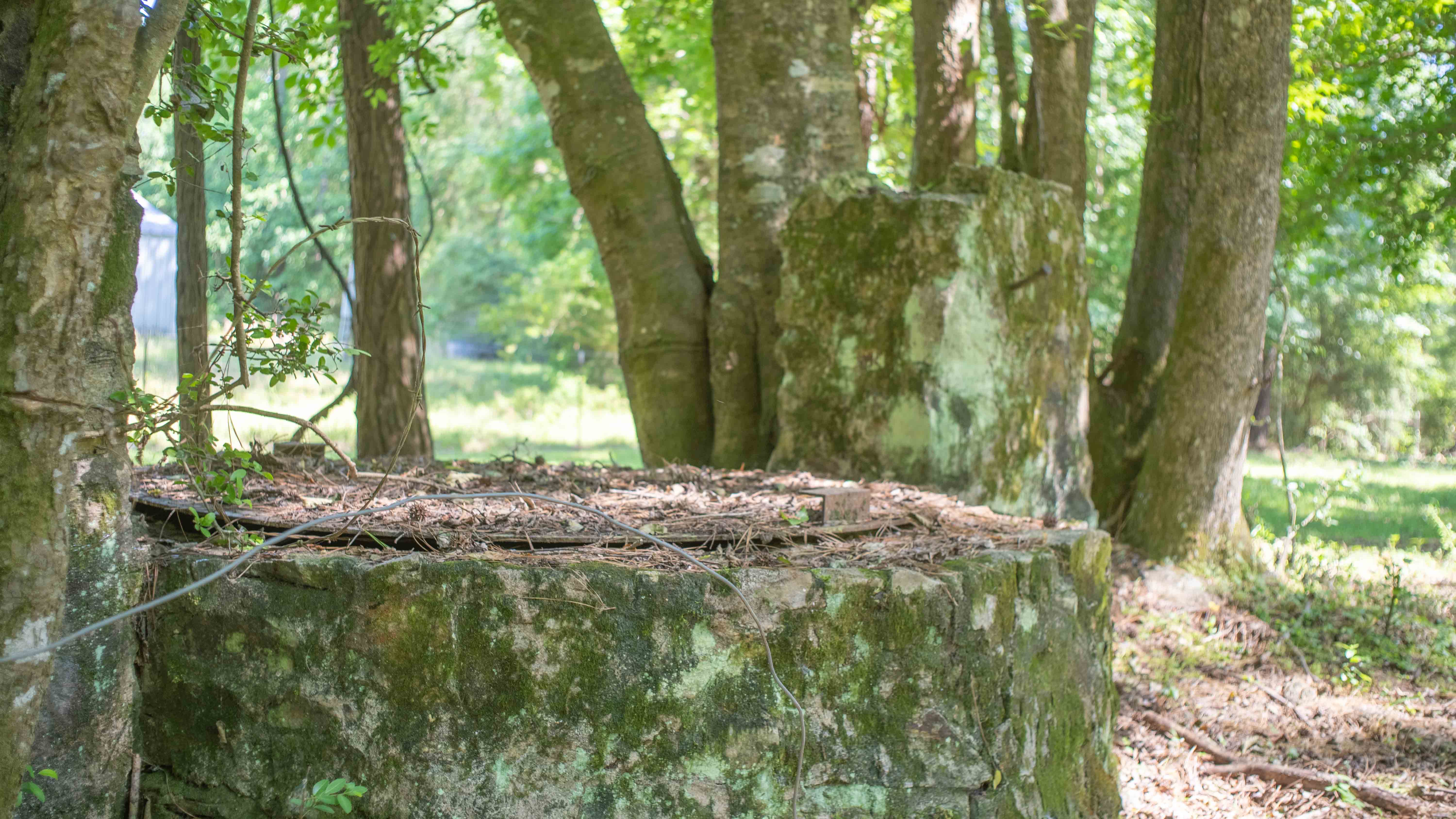 CALEB FORTENBERRY | TCB Mac Dunkin's well, located Northeast of the Rockland Mill site.
CALEB FORTENBERRY | TCB Mac Dunkin's well, located Northeast of the Rockland Mill site.
The Rockland Mill site is on private property and unfortunately there is no public access to it. Because of this factor, it has remained in a healthier condition than the other structures such as the Aldridge mill, which has been defaced with spray paint graffiti for years. After being granted permission to locate different parts of the mill, many older bottles were discovered near where the general store or commissary would have been placed. What would have been trash, paints a picture of what life could have looked like back then. The concrete structure that held the steam engine still stands erect, but the steam engine itself is no longer on the site. Various concrete foundations lay in the dense underbrush. There are numerous possibilities of what they could have been used for, but it is safe to assume the boilers would have been located nearby and there is a good chance they would have been placed on foundations, such as the ones found. Trams that ran from the railroad are still built up around the mill pond. The pond is still holding water, but many trees have grown in it and around it, so it is not easily accessible nor noticeable.
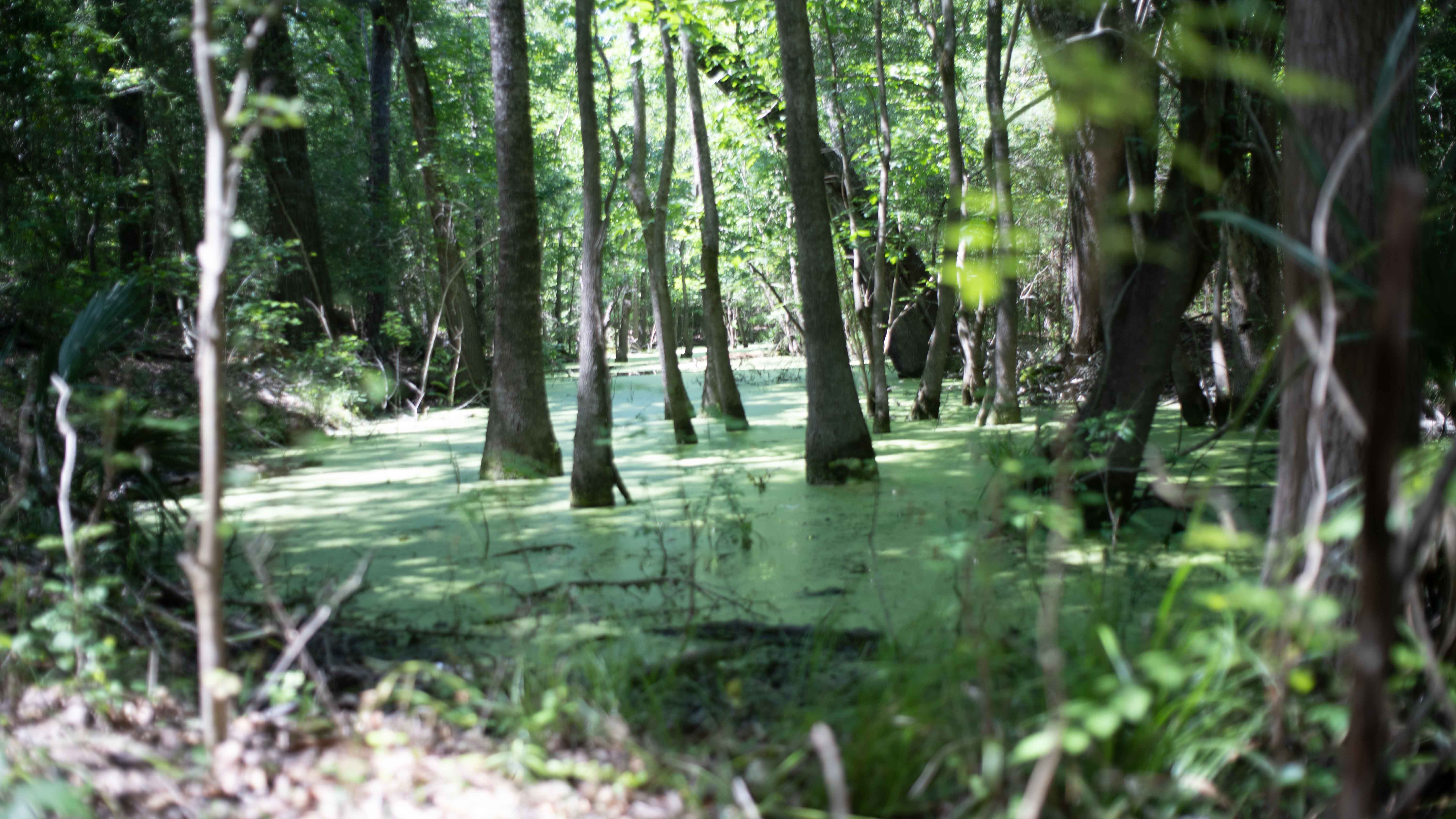 CALEB FORTENBERRY | TCB The Rockland Mill pond's levee broke at some point, but still holds water and has traces of the tram surrounding it.
CALEB FORTENBERRY | TCB The Rockland Mill pond's levee broke at some point, but still holds water and has traces of the tram surrounding it.
According to Texas State Historical Association, Rockland has had a population of about 100 people since 1990. From 1900 to 1940 the population was roughly 300 and thought to have close to 500. The town included 150 to 200 dwellings for sawmill workers, a school and church building, three doctors' offices, two drugstores, a livery stable, a dance hall, and a railroad station. Now, only residential structures, rock quarries, and lumber tracts remain. Although, not much resides in the once bustling town, the remnants of Rockland are still there, underneath the earth being preserved in its once trampled grounds.
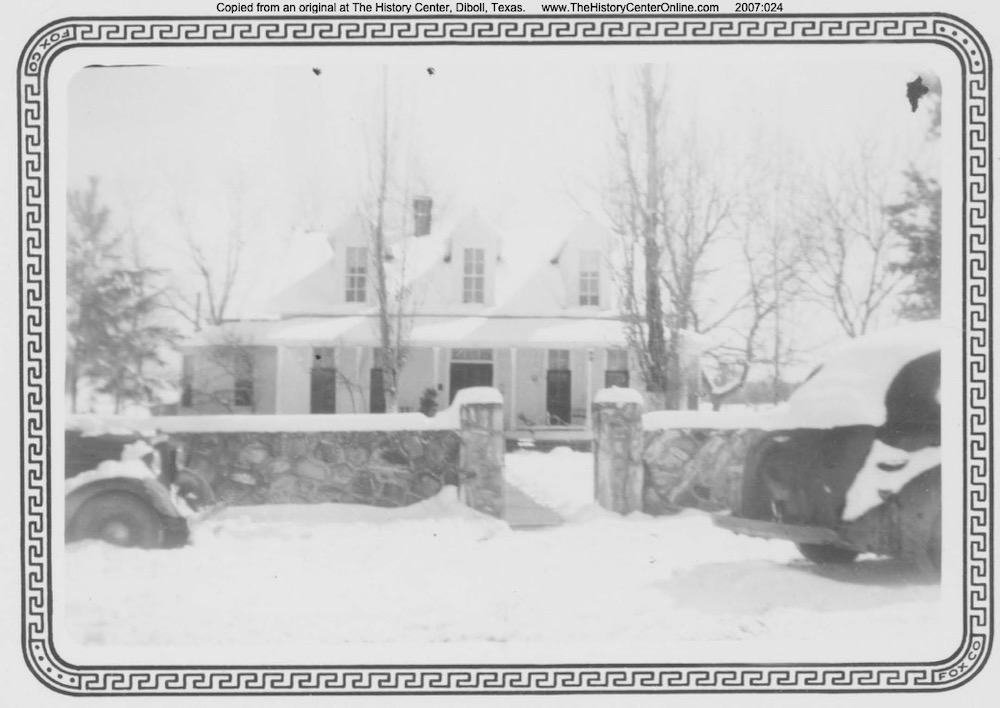 COURTESY THE HISTORY CENTER, DIBOLL, TEXAS The Aldridge family home in Rockland. Hal Aldridge built this house at the time of his marriage. The home was later turned into a hotel. The home was still standing in 2020.
COURTESY THE HISTORY CENTER, DIBOLL, TEXAS The Aldridge family home in Rockland. Hal Aldridge built this house at the time of his marriage. The home was later turned into a hotel. The home was still standing in 2020.